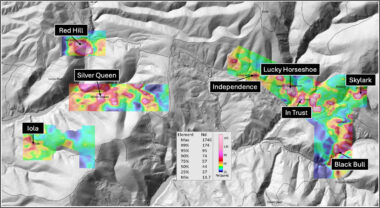The global dairy market may experience a slower price recovery than previously anticipated, particularly as China shows a reduced need for dairy imports, Rabobank says in recently-released sector research.
But, despite this, the overall market outlook remains positive, the global specialist agribusiness bank says in its Q2 Global Dairy Quarterly, titled Searching for Equilibrium.
The report says the initial surge in global dairy prices seen in late 2023 and early 2024 was largely due to a period of importers’ restocking at lower prices rather than a robust uptick in consumer demand.
And the recovery in global milk prices has encountered some headwinds in Q2 2024, the bank says. Earlier expectations of gradual price increases throughout the year have been tempered by a combination of weaker global demand and increased domestic milk production in China, which has led to a reduction in imports.
These factors suggest global dairy prices may encounter further obstacles on the path to recovery, according to Rabobank.
Modest global production growth
Report co-author, RaboResearch senior dairy analyst Michael Harvey said while China has seen an upward revision in its milk production forecast for 2024, other key dairy-producing regions are not faring as well.
“Milk production from the main global export regions will expand only modestly in Q3 before gaining some momentum towards the end of the year,” he said.
“Low profitability over the past 12 months has led to a decrease in dairy herds in key regions like the US and South America while weather-related issues have also affected milk output in recent weeks, with diminished rains in New Zealand and excess rains in Europe.”
Mr Harvey said this subdued global milk supply growth should help underpin a continuation of the dairy market recovery and an improvement in milk prices for dairy producers in most regions around the world. However, he cautioned, the recovery would not be smooth.
“Global demand recovery signals are mixed and consumers’ purchasing power remains under pressure,” he said. “Although unemployment remains close to record-low levels in most large markets, consumer sentiment is gloomier than anticipated. Inflation remains above target in most countries and high interest rates continue to put pressure on debts and consumer spending at a time when credit plays an important role after cumulative inflation in recent years.”
China factor
Another potential headwind for dairy prices, Mr Harvey said, was higher milk production in China, which would limit Chinese demand for dairy imports.
“We have now revised our forecast for milk output in China for 2024 up from two per cent growth to 3.2 per cent, reflecting higher-than-anticipated output due to the lagging effect from the last round of dairy expansions during 2019-2022,” he said.
Added to this, the report said, Chinese dairy consumption remains subdued on the back of a weak job market and low consumer confidence, despite stronger sales earlier in the year during the Lunar New Year period.
The bank expects China’s net dairy imports to be eight per cent lower in 2024 compared with 2023, marking a third consecutive decline in net import volumes.
“The combination of stronger local milk production and weaker consumer demand in China will diminish the domestic deficit to around 11 million metric tonnes LME (liquid milk equivalent), while SMP (skim milk powder) import volumes are likely to decline by 20 to 30 per cent compared with 2023 levels,” Mr Harvey said.
For Australia, the report said, milk production was higher across all regions and states for the “season to date” (at 5.95 billion litres for June 1, 2023 to February 29, 2024).
Mr Harvey said key dairying regions across Australia had seen a “mixed autumn break”, with western Victoria and south-east South Australia experiencing dry conditions. “And while El Nino has ended, the Bureau of Meteorology is predicting below-average rainfall in its near-term outlook,” he said.
Nonetheless, Mr Harvey said, milk production growth will carry momentum into the new season, with Australian dairy farmers generally on a strong footing as the new season approaches.
“Feed availability is adequate following good winter and summer crops and full water storage will also ensure availability of irrigation water,” he said.
The bank forecasts Australian milk production to finish the 2023/24 season 2.9 per cent higher at 8.23 billion litres.
An early look at the 2024/25 season – to commence on June 1 – sees the bank forecasting a further one per cent increase in milk production ahead.
The report said Australian dairy exports volumes, however, had remained weak, down six per cent season-to-date, as at the end of February.
Local Australian milk pricing is set to be “somewhat positive” for the new season, Rabobank says, with a well-performing domestic market and healthy competition among dairy companies continuing to be key drivers.
Other watch factors
In addition to Chinese dairy production growth and reduced import demand, the report identifies several other factors that could influence global dairy markets over coming months, including nitrogen derogation limits in Europe and pathogenic avian flu.
“After earlier announcements about lowering nitrogen derogation limits in the Netherlands and Ireland, Denmark has decided not to apply for a renewal of the nitrogen derogation,” Mr Harvey said. “This means that Denmark will limit the application of organic N from animal manure to 170kg per HA (from 230kg) of grassland, effective July 31 this year. Ultimately, lower application rates reduce the carrying capacity per hectare and potentially increase costs for manure disposal, which could result in farmers re-balancing their herd size.”
Another watch factor, Mr Harvey said, was highly pathogenic avian flu which is infecting cows in eight different US states.
“The disease is primarily symptomatic in older cows, but it is likely younger cows are also infected but asymptomatic. There has not been a measurable reduction in milk supply, but the spreading infection remains a key watch factor from both the supply side and consumer demand lenses,” he said.
Other watch factors identified in the report include elections in key regions across the globe, the strength of the US dollar and global weather systems.
<ends>
Media contacts:
Denise Shaw Will Banks
Media Relations Media Relations
Rabobank Australia & New Zealand Rabobank Australia
Phone: 02 8115 2744 or 0439 603 525 Phone: 0418 216 103
Email: [email protected] Email: [email protected]
About us:
Rabobank Australia & New Zealand Group is a part of the international Rabobank Group, the world’s leading specialist in food and agribusiness banking. Rabobank has more than 120 years’ experience providing customised banking and finance solutions to businesses involved in all aspects of food and agribusiness. Rabobank is structured as a cooperative and operates in 38 countries, servicing the needs of more than nine million clients worldwide through a network of more than 1000 offices and branches. Rabobank Australia & New Zealand Group is one of Australasia’s leading agricultural lenders and a significant provider of business and corporate banking and financial services to the region’s food and agribusiness sector. The bank has 90 branches throughout Australia and New Zealand.



